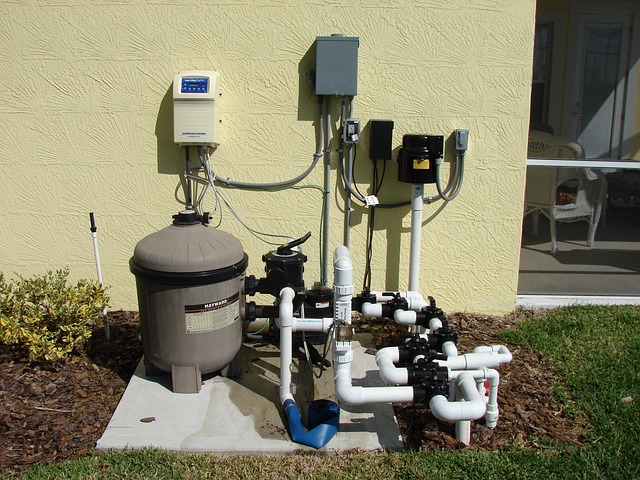Exploring Water Softener Options: Common Features and Installation Insights
Water softener systems are designed to reduce mineral buildup in household water, which can impact plumbing and appliances. This guide explores common system features, the types of softeners available, and important considerations for homeowners planning installation.

Common Features Found in Water Softener Systems
Most residential water softener systems share several key features designed to effectively treat hard water. Ion exchange technology serves as the foundation for traditional systems, using resin beads that exchange hardness minerals for sodium ions. Almost all modern systems include automatic regeneration cycles that flush and recharge the resin bed when its exchange capacity is depleted. Control valves regulate water flow and cycling operations, with digital interfaces becoming increasingly standard, allowing users to monitor water usage and system status.
Brine tanks form an essential component of salt-based systems, storing the salt solution needed for regeneration. Many contemporary models incorporate metered regeneration capabilities that initiate the process based on actual water usage rather than preset timers, improving efficiency. Flow rate capacity is another crucial specification, typically ranging from 7-15 gallons per minute for residential units, with appropriate sizing being essential to maintain adequate water pressure throughout the home.
Types of Water Softeners Used in Residential Properties
Salt-based ion exchange softeners remain the most widely used residential systems. These conventional units effectively remove calcium and magnesium through sodium exchange and typically require regular salt replenishment. For households concerned about sodium intake or environmental impact, salt-free conditioners present an alternative. Rather than removing minerals, these systems use Template Assisted Crystallization (TAC) or similar technologies to alter the structure of hardness minerals, preventing them from forming scale deposits.
Dual-tank softener systems have gained popularity in households with high water usage patterns. By maintaining one tank in service while the other regenerates, these systems provide uninterrupted soft water availability. Magnetic and electronic descalers represent another category, using magnetic fields or electrical impulses to alter mineral behavior, though their effectiveness remains debated among water treatment professionals. For comprehensive water treatment, combination systems integrate softening capabilities with additional filtration to address multiple water quality issues simultaneously.
Installation Considerations for Home Water Softener Systems
Proper installation location represents the first critical decision when implementing a water softener. The system should be positioned at the main water entry point for whole-house treatment, requiring sufficient space for both the main unit and brine tank. Access to drainage is essential for handling discharge water during regeneration cycles, while proximity to electrical outlets is necessary for systems with electronic controls. Most installations require bypass valves to allow maintenance without disrupting household water supply.
Plumbing modifications typically involve cutting into existing water lines and installing appropriate connectors, requiring consideration of pipe materials and compatibility. Many UK homes with older plumbing systems may need additional modifications to accommodate modern softening equipment. Water pressure considerations are equally important, as some systems create pressure drops that could affect household water flow, potentially necessitating pressure boosting solutions in properties with already low water pressure.
Professional vs. DIY Installation Options
The decision between professional and DIY installation depends on several factors including plumbing experience, system complexity, and local regulations. Professional installation offers expertise, proper sizing calculations, and adherence to local building codes, typically costing between £300-£600 beyond equipment costs. Installers can optimize system placement, perform proper initial settings, and provide operational training to homeowners.
DIY installation has become more feasible with manufacturer-provided kits containing necessary fittings and detailed instructions. This approach typically saves £300-£500 in labor costs but requires basic plumbing skills and appropriate tools. DIY installers should thoroughly research local plumbing codes, as improper installations can lead to water damage, system underperformance, or even code violations. Many manufacturers offer technical support lines to assist DIY installers facing challenges during the process.
Water Softener System Costs and Options
The market offers various water softener systems across different price points and capabilities. Entry-level salt-based systems typically range from £400-£700, while premium models with advanced features can cost £800-£1,500. Salt-free conditioners generally fall between £600-£1,200 depending on technology and capacity.
| System Type | Average Cost Range | Key Features | Maintenance Requirements |
|---|---|---|---|
| Standard Salt-Based Softener | £400-£700 | Ion exchange technology, basic timer controls | Regular salt refills, annual cleaning |
| High-Efficiency Salt-Based | £800-£1,200 | Metered regeneration, reduced salt usage, digital controls | Regular salt refills, annual maintenance |
| Salt-Free Conditioner | £600-£1,200 | No salt required, no backwashing, TAC technology | Minimal maintenance, media replacement every 3-5 years |
| Dual-Tank System | £900-£1,500 | Continuous soft water, higher capacity | Regular salt refills, annual professional service |
| Magnetic/Electronic | £150-£300 | No salt, no plumbing modifications | Minimal maintenance, no consumables |
Prices, rates, or cost estimates mentioned in this article are based on the latest available information but may change over time. Independent research is advised before making financial decisions.
Ongoing Maintenance Requirements
All water softening systems require regular maintenance to ensure optimal performance and longevity. Salt-based systems need periodic salt replenishment, typically every 4-8 weeks depending on water hardness and usage patterns. The brine tank should be cleaned annually to remove salt bridges or sludge buildup that can impair system efficiency. Resin bed cleaning is recommended every 2-3 years, often using specialized resin cleaners to remove iron and organic contaminants that can reduce exchange capacity.
Salt-free systems generally require less maintenance, though filter media or cartridges may need replacement according to manufacturer schedules, typically every 3-5 years. Regular water testing helps monitor system effectiveness and identify any performance issues before they become problematic. Many modern systems include diagnostic features that alert homeowners to maintenance needs or potential malfunctions, simplifying the upkeep process.
Understanding these features, types, and installation considerations enables homeowners to select appropriate water softening solutions that align with their specific water quality challenges, household needs, and budget constraints. With proper installation and maintenance, these systems can significantly improve water quality and protect plumbing systems and appliances from the damaging effects of hard water.




